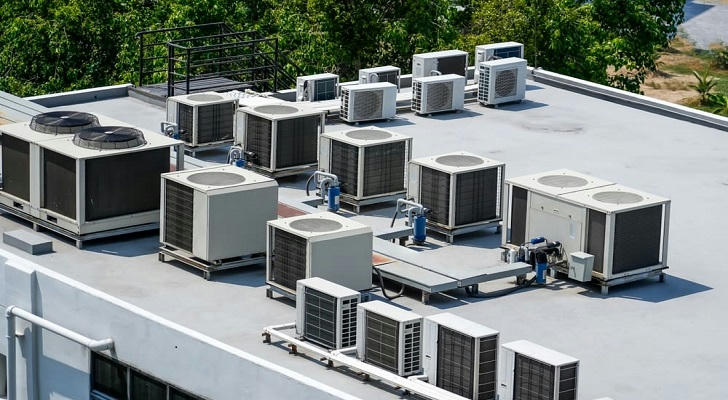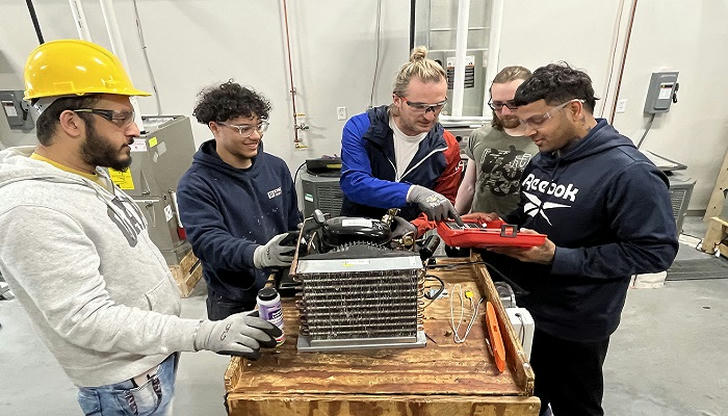Government Support and Institutional Provision: Get Paid While Receiving HVAC Career Training
Are you considering a career in hvac but worried about the cost of training?
If so, it’s time to reconsider your choice! Entering the HVAC (heating, ventilation and air conditioning) industry doesn’t mean learning without getting paid. With the demand for skilled HVAC technicians growing rapidly, many organizations and governments offer grants, wage subsidies and apprenticeship incentives to help cover the cost of training while keeping participants paid from day one, allowing you to earn while you learn.

with the shortage of hvac professionals reaching critical levels, companies and training providers are expanding their efforts to attract new talent. the increasing focus on energy efficiency and green technologies has only heightened the need for skilled workers. this demand makes hvac not just a job, but a stable and rewarding career path. Explore below how an inventory of HVAC training programs can benefit you in the long term!
overview of paid hvac training programs
here are the key benefits of enrolling in a structured hvac training program:
| --- ✅ earn while you learn – some programs offer paid apprenticeships or employer-sponsored training. ✅ job security – the hvac industry has a high demand for certified technicians. ✅ short training period – many programs can be completed in 4 to 12 months. ✅ hands-on experience – gain real-world skills through on-the-job training. ✅ no massive tuition fees – avoid the high costs of private technical schools. ✅ Certification Available – Upon completion of the training, participants may obtain common HVAC certifications based on the course content, including EPA 608 Certification (required for handling refrigerants) and NATE Certification (National HVAC Technician Exam), among others. |
why choose hvac training?
the u.s. bureau of labor statistics predicts 5% job growth in hvac from 2022 to 2032, faster than the average for all occupations.
with the focus on energy efficiency and sustainability, hvac professionals play a key role in building maintenance and modernization.
Government-Supported HVAC Paid Training Programs
The HVAC industry is facing a significant labor shortage, and to address this issue, government-supported HVAC training programs are making it easier for individuals to enter this high-demand field. Many federal and provincial/state governments offer grants, wage subsidies, and apprenticeship incentives to help cover the cost of training while allowing participants to earn a paycheck from day one.
Through government-backed apprenticeships, trainees receive on-the-job instruction from experienced professionals while working toward their HVAC certification. Additionally, funding programs such as tuition assistance, tax credits, and workforce development grants reduce financial barriers, making HVAC training accessible to more people. These initiatives not only help individuals build stable and well-paying careers but also support the industry’s growing need for skilled workers.

1. comprehensive training structure
hvac training programs typically follow a structured learning process:
📌 phase 1: classroom instruction & certification preparation
🕒 duration: 2-4 months (varies by program)
📌 topics covered:
basic hvac principles
refrigeration cycles & troubleshooting
electrical systems & wiring
energy-efficient systems
📌 phase 2: hands-on apprenticeship & job placement
🕒 duration: 3-5 months
📌 training includes:
real-world experience working on residential & commercial hvac systems
mentorship from certified hvac professionals
paid apprenticeship opportunities
Participants can earn $18 to $23 per hour during their studies (data from the U.S. Apprenticeship Office), and after graduation, contracted companies generally offer an hourly wage of $27+ and promise 90% job security. More importantly, the National Air Conditioning Contractors Association predicts that the industry gap will reach 110,000 by 2027, which means that the skills you master today can turn into real money tomorrow.
How to Get Started
Follow these steps to navigate the process and make the most of available resources.
2. financial benefits of hvac training
💰 earn while you train – unlike traditional college programs, some hvac apprenticeships pay you while you learn.
💵 high earning potential – entry-level hvac technicians earn $45,000–$55,000 per year, while experienced professionals can earn over $80,000.
❌ no student loan debt – many training programs are employer-sponsored or offer financial aid.
3. supportive learning environment
🏠 lodging & travel assistance – some hvac training programs provide housing assistance for students relocating for training.
👨🏫 experienced instructors – learn from seasoned hvac technicians with years of industry experience.
📈 high pass rates – quality training programs prepare students to pass nate (north american technician excellence) & epa 608 certification exams on the first attempt.
why choose a paid hvac training program?
🔥 high demand – as older hvac professionals retire, the industry urgently needs new technicians.
🏆 job security – an hvac career offers long-term stability and growth opportunities.
💡 future-proof career – with the push toward smart hvac systems & green energy, hvac technicians will always be in demand.
📢 "start a career that pays you to learn, and offers financial security for the future!"
getting hired as an hvac technician
most hvac training programs require applicants to:
🔹 be at least 18 years old
🔹 have a high school diploma or ged (some programs may waive this requirement)
🔹 pass a drug test & physical exam
🔹 have a valid driver’s license

🚀 start your hvac career today!
if you're looking for an affordable and highly in-demand career, hvac training is a smart choice. with paid apprenticeships, short training periods, and high earning potential, there’s never been a better time to start.
